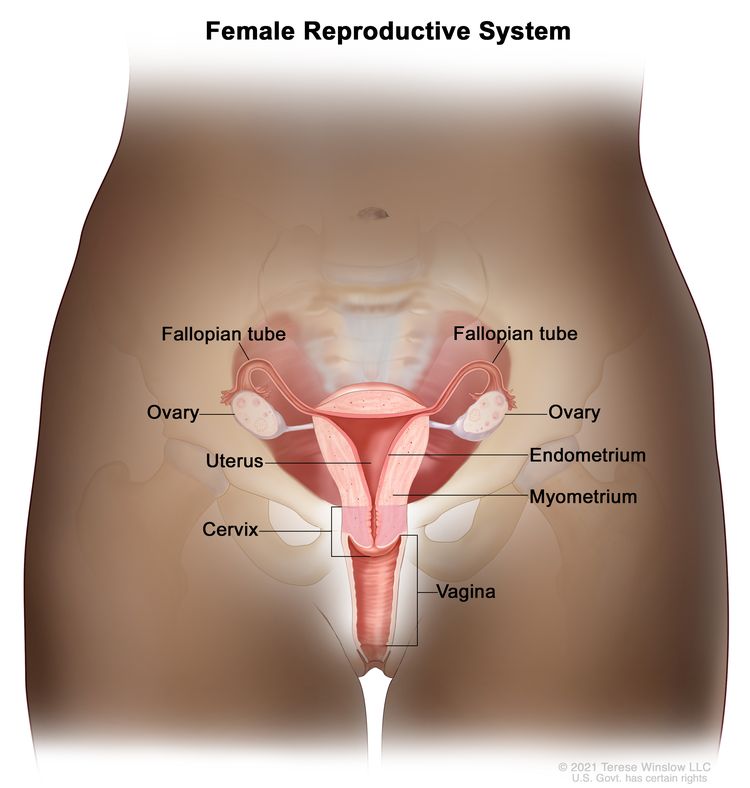Ovarian Germ Cell Tumors Treatment (PDQ®)–Patient Version
General Information About Ovarian Germ Cell Tumors
KEY POINTS
- Ovarian germ cell tumor is a disease in which malignant (cancer) cells form in the germ (egg) cells of the ovary.
- Signs of ovarian germ cell tumor are swelling of the abdomen or vaginal bleeding after menopause.
- Tests that examine the ovaries, pelvic area, blood, and ovarian tissue are used to detect (find) and diagnose ovarian germ cell tumor.
- Certain factors affect prognosis (chance of recovery and treatment options).
Ovarian germ cell tumor is a disease in which malignant (cancer) cells form in the germ (egg) cells of the ovary.
Germ cell tumors begin in the reproductive cells (egg or sperm) of the body. Ovarian germ cell tumors usually occur in teenage girls or young women and most often affect just one ovary.
The ovaries are a pair of organs in the female reproductive system. They are in the pelvis, one on each side of the uterus (the hollow, pear-shaped organ where a fetus grows). Each ovary is about the size and shape of an almond. The ovaries make eggs and female hormones.

Ovarian germ cell tumor is a general name that is used to describe several different types of cancer. The most common ovarian germ cell tumor is called dysgerminoma. See the following PDQ summaries for information about other types of ovarian tumors:
Signs of ovarian germ cell tumor are swelling of the abdomen or vaginal bleeding after menopause.
Ovarian germ cell tumors can be hard to diagnose (find) early. Often there are no symptoms in the early stages, but tumors may be found during regular gynecologic exams (checkups). Check with your doctor if you have either of the following:






















.png)











No hay comentarios:
Publicar un comentario